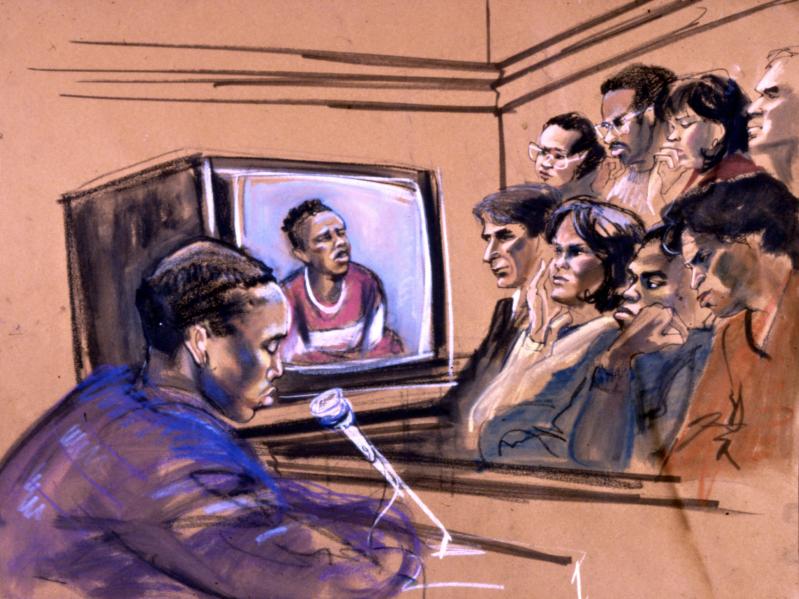Last month, ABC’s “20/20” broadcast “One Night in Central Park,” a two-hour examination of the Central Park jogger case that tore New York City apart 30 years ago. The program made extensive use of courtroom drawings by Marilyn Church, who divides her time between Amagansett and New York City. Soon after, she heard from a friend who happened to be on the board of the Long Beach Opera in Southern California.
“She told me they were going to present the world premiere of a new opera, ‘The Central Park Five,’ and she wanted to connect me with the writer and director,” Ms. Church said. As a result, her drawings from the trial are not only on exhibit at the Warner Grand Theatre in San Pedro, they are also being projected during the opera, which will have its final performances on Saturday and Sunday.
“At first I wondered how they would make an opera out of that, but the more I thought about how tragic what happened was on all sides, I thought it would probably make a really interesting opera. I wish I could be in Los Angeles to see it.”
Ms. Church has maintained parallel but related careers, one as a fine artist who has exhibited extensively, and another as a courtroom artist who has covered countless high-profile trials.
The 30th anniversary of the Central Park jogger case has generated considerable media attention, including “When They See Us,” a new Netflix mini-series directed by Ava DuVernay. “I sat through both Central Park jogger trials; I drew there practically every day. I had to look at the first episode of the series, but I found it so upsetting that I haven’t been able to watch subsequently.”
She said the stress of working fast and meeting deadlines did not prevent getting emotionally involved in cases. “Certain things I can relate to more, like young teenage boys. I had a teenage son at the time. Mothers, children, also the stockbroker it happened to. Everything was emotional. Mothers would plead with me not to draw their sons looking angry.”
Her drawings are represented in the Library of Congress, which has more than 4,500 dating from 1974 to the present, and the Smithsonian’s National Museum of American History. “It’s wonderful,” she said. “These drawings would often wind up on newsroom floors, and I’d be trailing after, picking them up and treasuring them. I always had the feeling that one day they would be interesting and historic. They are really the only visual record of what went on in the courtroom.”

